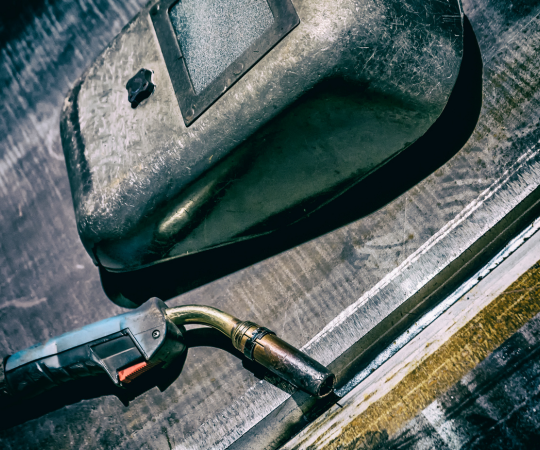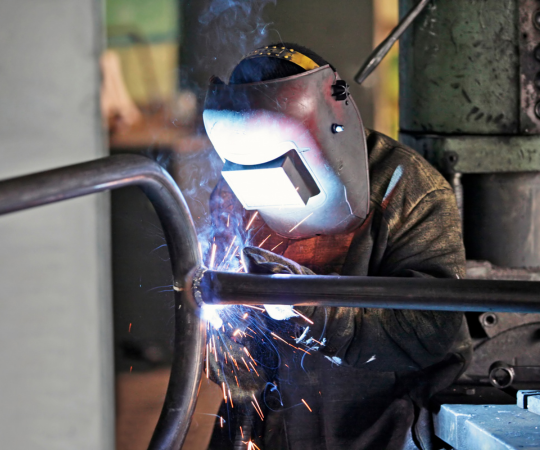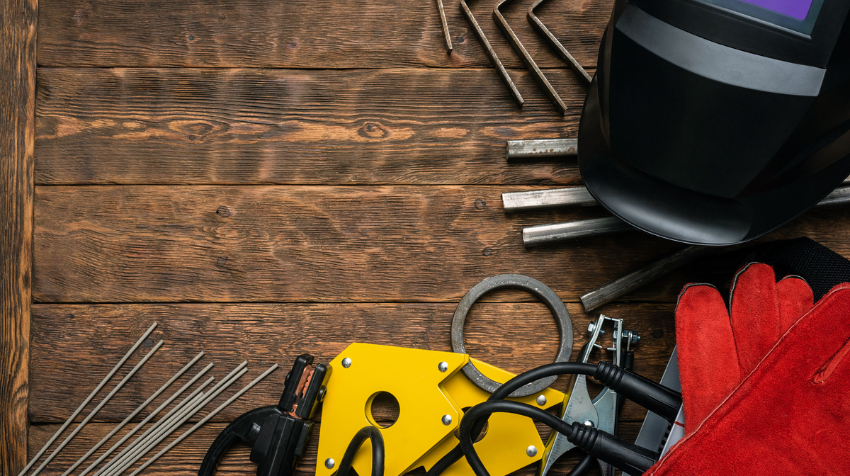Gear Up for Success: Uncovering the Essential Welding Tools and Gadgets of 2023
As a welder, you know that having the right tools and gadgets can make all the difference in your work. But with so many options out there, how do you know which ones are essential for your toolbox?
In this article, we’ll take a closer look at the top welding gadgets of 2023 to help you stay ahead of the game. While some may argue that welding is an art form that requires nothing more than skill and experience, any seasoned welder will tell you that having the right equipment is crucial to achieving high-quality results.
From welding helmets to safety gear, we’ll cover all the must-have items for any welder looking to up their game. So whether you’re just starting out or are a seasoned pro looking to upgrade your arsenal, read on to discover the essential tools every welder needs in 2023.
Welding Helmets
Let’s check out the latest and greatest in welding helmets! As a welder, you know how crucial it is to have proper protection for your eyes and face. With so many helmet options available, it can be overwhelming to choose one that fits your needs. However, modern technology has allowed for customization features that cater to individual preferences.
Some popular customization features include auto-darkening lenses that adjust to different brightness levels, variable shades for specific welding types, and even Bluetooth connectivity for hands-free communication. With these options available, you can find a helmet that not only protects but also improves your overall welding experience.
Now onto the next essential tool – welding gloves.

Welding Gloves
The importance of protecting one’s hands while welding can’t be overstated. In fact, according to a recent survey, over 70% of welders reported suffering a hand injury at some point in their career. This is where welding gloves come into play.
Welding gloves are an essential tool for any welder as they provide heat resistance and dexterity, allowing the welder to work with precision and safety. They are made from materials that can withstand high temperatures, such as leather or Kevlar. Additionally, they have additional padding on the palm and fingers for added protection against sparks and hot metal fragments.
The design of these gloves allows the welder to grip tools tightly without compromising on dexterity. It is important to choose the right size glove for optimal comfort and control during use. With properly fitting gloves, you can ensure that your hands remain protected while you focus on creating seamless welds.
As crucial as welding gloves are to protect your hands from injuries while working with hot metals, it’s equally important to select appropriate welding machines that assist you in achieving precise results with ease.
Welding Machines
When it comes to welding machines, there are a few key points you should consider before making a purchase. Firstly, you’ll want to think about the type of welding process you’ll be using – MIG, TIG, or Stick. This will greatly impact your choice of machine.
Secondly, the brand you choose can make a big difference in terms of quality and reliability.
And finally, paying attention to features such as amperage range and duty cycle can ensure that you get the most out of your welding machine investment.
MIG vs. TIG vs. Stick Welding
Deciding between MIG, TIG, and stick welding techniques can be a tough choice for any welder. Each technique has its own advantages and disadvantages that depend on the type of work you are doing.
If you’re a beginner, stick welding may be the best option as it is easier to learn and requires less equipment. However, MIG and TIG welding offer more precision and control over the weld, making them ideal for intricate projects.
To help you make an informed decision about which technique to use, here are some key differences between MIG and TIG welding:
- MIG welding is faster than TIG welding because it uses a continuous wire feed instead of individual rods.
- TIG welding produces cleaner welds with less spatter than MIG welding due to the precise control over heat input.
When it comes to stick welding techniques for beginners, it’s important to remember that this method requires more skill in controlling the arc length and maintaining proper electrode position.
Whichever technique you choose ultimately depends on your skill level, project requirements, and personal preference.
Now that we’ve explored the differences between these three popular methods of welding, let’s take a look at some of the best brands and features available in today’s market.
Best Brands and Features
For you, finding the finest features from favored welding brands will help you achieve flawless fabrication. When it comes to choosing the best welding gadgets, you need to consider two significant factors: durability and price.
Some brands may offer advanced features at a higher cost, while others provide standard functionalities at a lower price point. It’s essential to balance these factors based on your needs and budget.
Another critical factor is whether you want manual or automatic welding gadgets. Manual tools require more effort and skill from the welder but are typically less expensive than their automated counterparts. On the other hand, automatic gadgets can increase productivity and accuracy in welding work but tend to be pricier. Consider your preference for manual versus automatic devices when selecting your welding tools.
When it comes to welding clamps, they serve as an indispensable tool for any welder. They hold metal pieces together securely during the welding process, ensuring precise alignment and smooth finish.
To learn more about how different types of clamps can improve your welds’ quality, let’s explore this topic further in the next section.
Welding Clamps
You’ll need welding clamps to hold your materials securely in place while you work, ensuring a precise and accurate weld. Welding clamps are versatile tools that can be used to hold a variety of materials, from thin sheets of metal to thick pipes.
Here are some top tips for using welding clamps effectively:
- Use adjustable welding clamps so you can adjust the grip pressure according to the thickness of the material.
- Use magnetic welding clamps for materials that can’t be held by traditional clamping methods.
- Use bolt-style welding clamps for odd-shaped or irregularly sized materials.
- Use corner welding clamps for joining two pieces of material at a 90-degree angle.
- Use locking pliers as makeshift welding clamps when working with small pieces.
By using these tips, you’ll be able to ensure that your materials stay securely in place during the welding process, resulting in more accurate and consistent welds.
As important as it is to have good quality equipment like welding clamps, it’s also crucial to prioritize safety gear when working with hazardous machinery.
Welding Safety Gear
Now that you’ve learned about the importance of welding clamps, it’s time to focus on another crucial aspect of welding – safety gear. Welding can be dangerous if proper precautions aren’t taken, and investing in high-quality safety gear is essential for protecting yourself from potential hazards.
Two of the most critical pieces of safety equipment for welders are welding respirators and protective clothing. Welding produces harmful fumes and particles that can cause serious respiratory problems over time. A welding respirator is designed to filter out these hazardous materials, ensuring that you breathe clean air while working.
Additionally, protective clothing such as gloves, jackets, and helmets protect your skin from burns caused by hot sparks or molten metal. Choosing the right protective gear will not only keep you safe but also allow you to work more efficiently without worrying about injury or discomfort.

Frequently Asked Questions
What kind of welding technique is best suited for beginners?
If you’re just starting out with welding, it can be overwhelming to choose which technique to begin with. MIG and TIG are two popular options, but which one is easier for beginners?
It really depends on what kind of projects you plan on working on. MIG welding uses a wire feed that melts into the metal to create the weld, making it faster and easier for beginners to learn. TIG welding requires more skill as it involves using a tungsten electrode to heat the metal and manually adding filler material.
Stick welding is another option for newbies, offering portability and versatility in terms of materials that can be welded. However, stick welding can be messy and produce less precise results than other techniques.
Ultimately, the best choice for beginners will depend on their individual goals and preferences.
How often should welding equipment be inspected for safety?
As a welder, it’s essential to prioritize safety in every aspect of your work. This means adhering to industry standards and regularly inspecting your equipment for potential hazards.
The frequency of inspections depends on the specific equipment you’re using, but as a general rule of thumb, it’s recommended to inspect your gear at least once a year. Safety standards are constantly evolving, so it’s crucial to stay up-to-date with any changes and make adjustments accordingly.
By prioritizing frequent inspections and staying informed about safety regulations, you can create a safer work environment for both yourself and those around you. Remember: safety is never an anachronism – it should always be top priority.
Are there any eco-friendly welding options available?
Looking for eco-friendly welding options? The good news is that there are several sustainable welding materials available in the market.
One of the most popular options is using recycled steel. This not only reduces waste but also helps to conserve natural resources.
Another alternative is using renewable energy sources like solar-powered welding machines, which reduce carbon emissions and help make your work environment more sustainable.
Additionally, some manufacturers have developed biodegradable or compostable packaging for their welding materials, making them more environmentally friendly overall.
By choosing these eco-friendly options, you can do your part in reducing your carbon footprint and contributing towards a cleaner, greener planet.
Can welding materials be recycled?
Did you know that over 500,000 tons of welding materials are discarded every year in the United States alone? That’s a staggering amount of waste, but there’s hope for a more sustainable future in welding.
Recycling welding materials not only reduces waste and conserves resources, but it also saves money in the long run. By implementing sustainable practices in welding, we can contribute to a healthier planet and a thriving industry.
With advancements in technology, it’s becoming easier than ever to recycle and repurpose welding materials. So, let’s make sustainability a top priority in the world of welding and do our part for the environment while creating high-quality products.
What kind of training is necessary to become a professional welder?
To become a professional welder, you need to have the right training and certification. Welder certification is crucial as it shows that you have the skills and knowledge required to perform welding tasks safely and efficiently.
There are different levels of certification, including entry-level certifications for those just starting in the field and advanced certifications for experienced welders looking to enhance their skills. Training programs are available at community colleges, technical schools, or through apprenticeships with experienced welders.
These programs cover essential topics such as welding safety, blueprint reading, metallurgy, and various welding techniques. By completing these training programs and obtaining proper certification, you can establish yourself as a skilled welder ready to take on any job.
Conclusion
So there you have it, the essential tools for every welder! With welding helmets, gloves, machines, clamps, and safety gear in your arsenal, you’ll be ready to tackle any welding project that comes your way.
These top welding gadgets of 2023 are designed to make your job easier and safer. But perhaps you’re thinking, “I don’t need all of these tools. I’m just a hobbyist.” While it’s true that not every welder needs all of these gadgets, investing in quality equipment can make a huge difference in the quality and safety of your work.
Plus, having the right tools will save you time and money in the long run by reducing mistakes and increasing efficiency.
In conclusion, whether you’re a professional welder or a DIY enthusiast, having access to high-quality welding gear is essential for success. Don’t hesitate to invest in the best tools available – they’ll pay off in the end with better results and increased productivity.
Remember: safety should always come first when working with welding equipment. Protect yourself with proper safety gear such as helmets and gloves so that you can enjoy this rewarding craft for years to come.
Related Source

